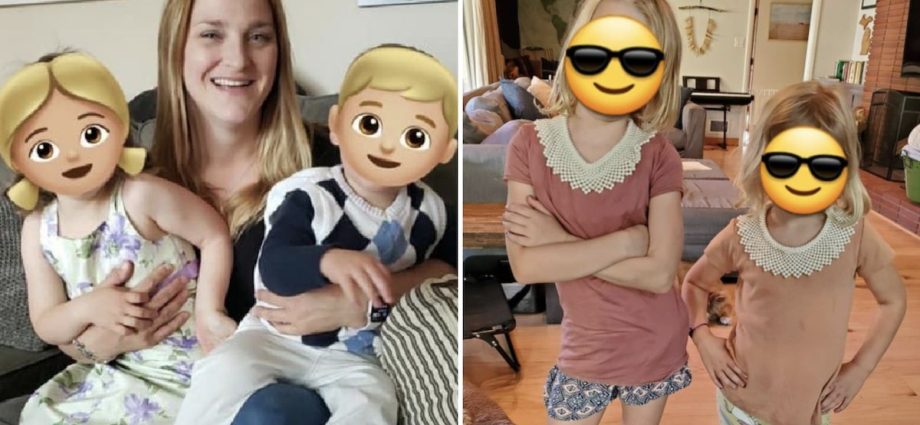Contents
“My bunny,” a young mother proudly writes, posting on Instagram (an extremist organization banned in Russia) a photo of her daughter in a stroller. Only the child’s face cannot be seen — it is covered with a smiley face — a winking face, a peach or a bunny. Fortunately, in applications, this is easy to do. But why do parents do this?
The temptation to brag to others about a photo of a long-awaited daughter or son can be great. And this can be understood! But in photographs, the faces of children are often covered with pictures, emoji, or blurred using the “blur” function. What reasons encourage parents to resort to such tricks?
1. Superstitions
This is the main and most common reason why people hide children, especially babies, from strangers. Many peoples have a belief: if an unkind or envious person sees the face of a baby, he will jinx it.
Believers can cover the stroller and limit the circle of guests only to close relatives until the baby is baptized or in the first 40 days of his life. Many families kept this tradition in the atheistic Soviet times, passing the «rule» from generation to generation, sometimes not really understanding why it arose. And today, “so as not to jinx it”, people mask children’s faces in the photo.
And here another superstition comes into play, which arose with the advent of photography — that is, almost two hundred years ago. Then the process of the appearance of a realistic photograph seemed like a sacrament, almost magic.
Many believed that photography expanded the possibilities of the human eye.
This was successfully used by photographers and retouchers, creating «mystical» photos (in fact, collages from different photographs) with deceased relatives. People believed that they saw spirits in the pictures. In the same way, later many began to “see” UFOs invisible to the eye in the photo.
Since the photograph, unlike paintings, seemed to be a continuation of reality because of its realism, fortune-tellers, shamans and «sorcerers» began to tell fortunes and send damage to the photograph of a person they brought.
This is how the tradition of hiding small children from prying eyes was transferred to their photographic images. After all, thanks to social networks, portraits of children are now seen not only by relatives in printed pictures, but also by strangers scrolling through the tape of their parents. So, the desire to “protect” is triggered.
But there are other reasons as well.
2. Protection against the use of images
Many, including scammers, use publicly available images. Agree, it would be very unpleasant to see the beloved face of your child in an advertisement or, even worse, a post from the series “He is terminally ill, we are raising money for treatment” — very unpleasant.
At the same time, the personal data of minors are protected by law. Therefore, the news tends to blur footage of children if parents or guardians have not given permission to show them.
3. Child safety
Touching photos of swimming or a beach holiday, published on a parent’s blog, can also arouse the interest of pedophiles. Therefore, many parents not only cover the faces of their children, but in principle never post such photos for everyone to see.
Celebrities and businessmen, meanwhile, may be concerned that intruders (such as competitors) do not kidnap a child. For the same reason, they hide the face of the child if the parents are divorced and there is a risk that the other side will take him away. It is better not to give your ex a reason for litigation because you allegedly do not respect the interests of children.
4. Parental rejection
Perhaps someone dreamed of giving birth to a princess with white curls and a doll face and was disappointed because in reality the daughter is brown-haired, her eyes are too small or there are any features of her appearance.
Alas, not all mothers and fathers accept and love children as they are. Shame and embarrassment are not the most worthy feelings, but they make them hide the face of the child.
5. Respect for privacy
Another important point is privacy. If a mother posts a photo of a six-year-old boy in a bunny costume at a children’s matinee, there is nothing to worry about. But after another six years, her son may be the object of ridicule or even bullying at school. And it will not be difficult for classmates to find his photo — on a potty or in funny pajamas.
It is unlikely that a child will say «thank you» to his mother, who disposed of his private life, not caring about the consequences.
So whether or not we’re superstitious, it’s worth seriously thinking about putting our children’s private lives on public display. We live in a new world, and we need to play by its rules, considering the possible consequences.










